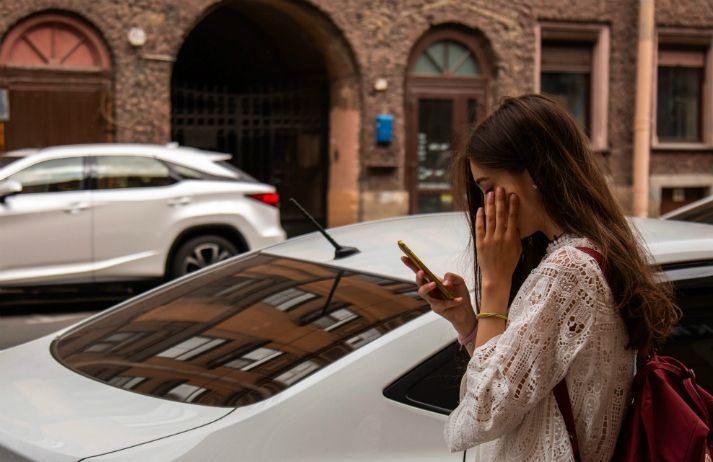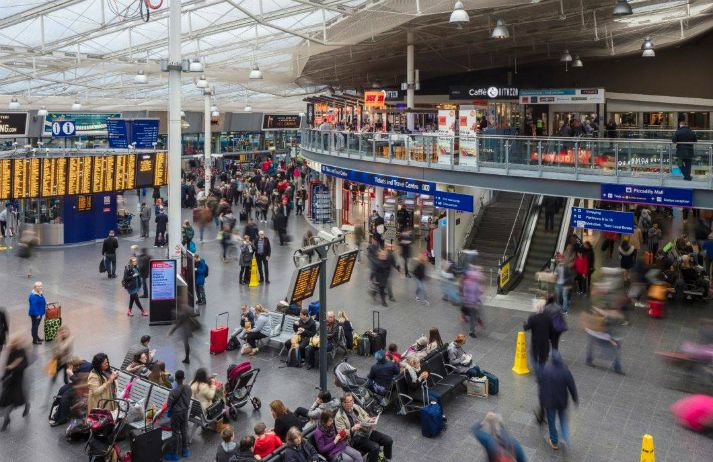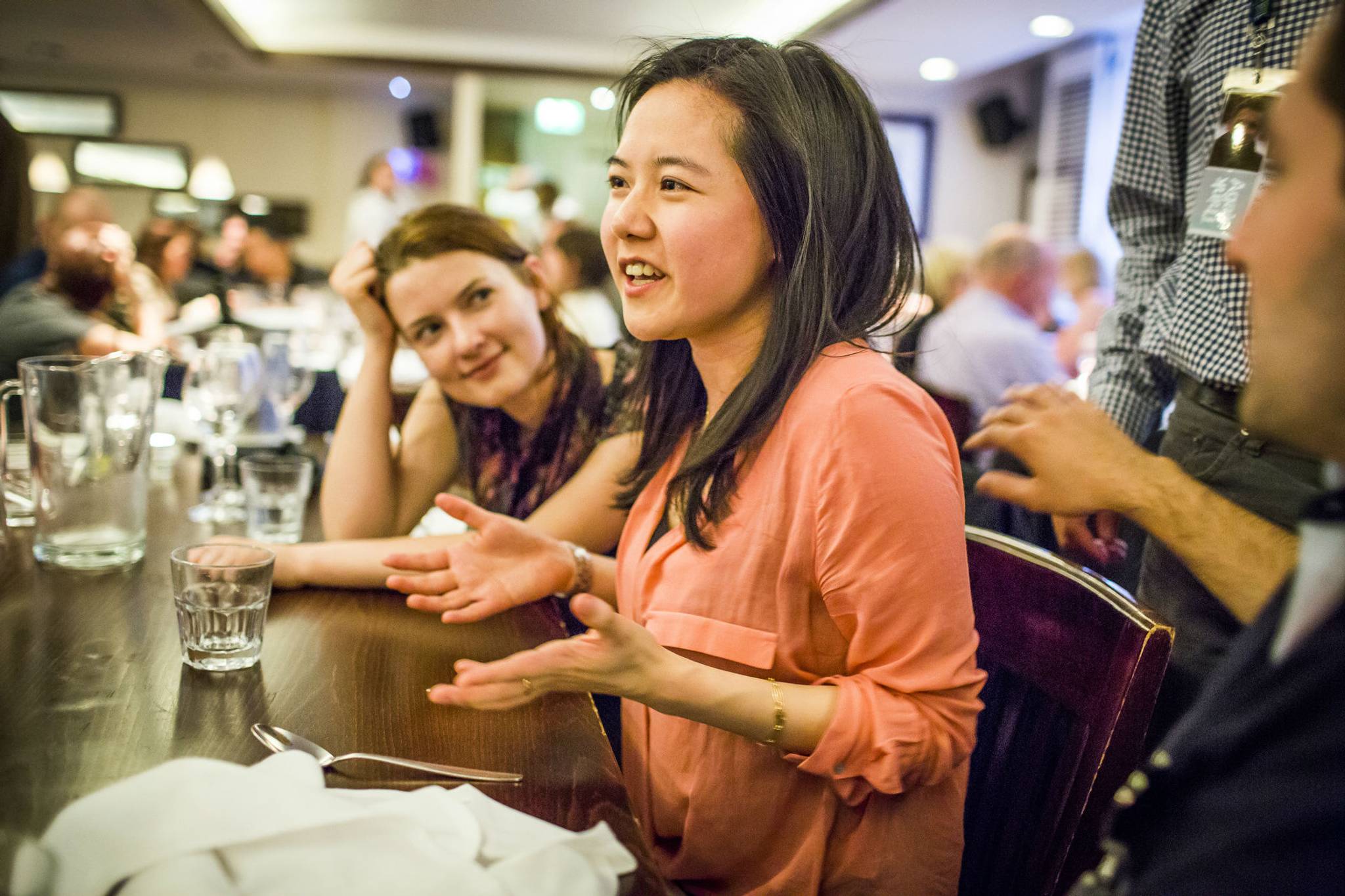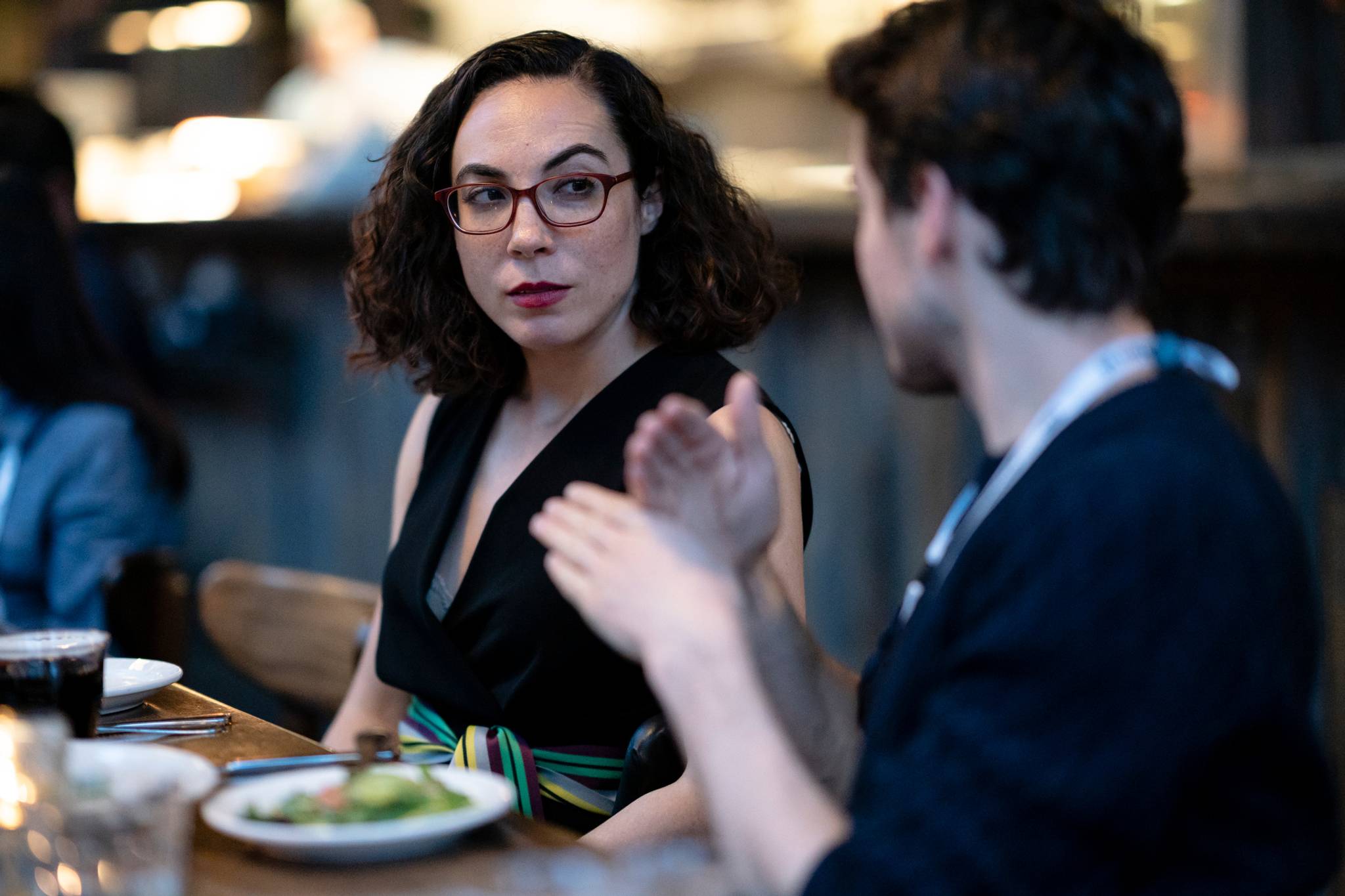
If there’s one thing Rory Sutherland wants you to take away from his new book Alchemy, it’s that the rational logic people think explain their behaviour, might not be the cause for it at all. Our logical mind has the fantastic ability to post-rationalise the things that we do, but really it’s our inner “chimp”, the emotional, urge-driven animal that dictates our behaviour.
Joining Canvas8 for the first Breakfast Briefing of 2020, Sutherland navigated attendees through his narrative full of reference points – threading research on behavioural science, creative ideas, and human-centric anecdotes.
Breakfast Briefings are Canvas8’s highly coveted roundtables – giving our members a rare opportunity to listen to thought leaders talk about their ideas in an intimate setting, followed by a Q&A. For those who weren’t able to attend, Senior Cultural Strategist Ant Firth-Clark has plucked out the essence of the talk, offering his perspective on 5 takeaways, the new ideas they signal, and how we might all apply them to our work and thinking.
1. Prioritising Delight
The innovators and perfectionists might like to think it's the ingenuity of brand products and services that explains why people appreciate products and brands. But often, what people really love is the delight they experience from the product or service – or how it makes them feel.
Rory - “Kano theory is the idea that on top of what you might call the ‘rational attributes’ of a product, there are these things called delight attributes. Which are often surprisingly trivial, or kind of tangential to the main purpose of the product – but which humans really really care about.
In a DVD play or a cassette deck, all that delight attribute was, was the eject mechanism. If you pressed eject, and it was a damped, pneumatic, hydraulic thing with a hiss, you thought: ‘Oofff, that’s lovely.’ And if you just pressed the eject and it just went CLACK, you'd be like ‘ew, I don’t like that at all.’ Of course, this is all entirely irrelevant to the sound reproduction, the battery life, the sound quality, all the things you should care about. But for whatever reason we don’t. And if you ask people, they say they like it because it is symptomatic of build quality.”
And you could easily make that consideration about Apple, where, despite the quality of technology behind the products, it’s the feeling of being part of the cool, creative class that is the narrative that people love... The Soho House of computers. Sutherland even spoke situationally about booking an UberLux: you can talk about the disruptive nature of Uber, the excellence in logistics, the cost-saving consumers enjoy, but Sutherland suggested it's more about feeling like a bit of a rockstar when stepping out onto the curb and having a nice car pull up for you at the same moment.
If we extract the people insight from this, it’s that people may absolutely care about the technology behind a product, the sleekness of its design, the number of pixels on a camera, etc - but this might not drive brand love, it just delivers on a promise. If you are considering a comms campaign that is feature-led, maybe the key is not to lead with the dimensions of the feature at all, but to frame it as to how this feature will make people feel, how it will delight them in a self-centred way. You might argue this form of intangible delight is also a key ingredient in shaping why people are drawn to cult brands.

2. Reframing Time
Anyone familiar with Sutherland’s talks will know about his ability to offer insight in how to reframe time as part of a service offering. In his first TedTalk, he introduced the consideration that you don’t need to spend billions on making the Eurostar faster, you can spend much less making the experience so much greater that people would beg for the journey to be longer. In the breakfast briefing, he updated the case study to a current day transport innovation: HS2.
Rory - “I asked one question, what is HS2 for? And they said two things: it’s to reduce journey time between London, Birmingham and Manchester, and it’s to increase capacity between London, Birmingham and Manchester. And how much is it going to cost? They said it was going to cost £70 billion. So I said, but I can do both of those things, it’s not going to take 20 years, it’s going to take 6 months, and I can do it for about half a million quid.
You’re obsessed with reducing the journey time of the time spent on the train, but that’s actually the best part of your entire journey. When you go to Manchester of Birmingham, the actual bit where you’re plonking your arse in “bargain advanced first” and someone’s bringing you scones, it’s the most productive time of your week. You can actually get some shit done. So I said, look, everytime I go to Birmingham, Manchester, etc, I buy an advanced ticket, which means I can’t afford to miss my train because if I do the ticket becomes void, and I have to buy a full fare ticket on top.
I allow a huge margin for error getting to Euston station, where I arrive 35-45 minutes early before the train leaves. In that time, one or two trains leave half empty for Birmingham or Manchester. Twenty or forty minutes before the train that I’m booked on… and they’re half empty. All you need to do with half a million quid is create an app which basically goes: I’m booked on the 11am train, I’m already at Euston at 10.15. And then, the app can just say : pay us a fiver, and you can board the train at Platform 8, and sit in seat J8. Forty minutes, or twenty minutes before your designated train leaves – and we'll cancel your reservation on the later train.
What does that do? One, it reduces the journey time by twenty or forty minutes. Two, it reduces the duration of the worst and most unproductive part of the journey which is standing around at Euston station like a dork, staring at the departure board.”
Despite the solutions being different between Eurostar and HS2, they both have something in common: a creative and innovative approach to thinking about time. Investing in bigger and faster doesn’t need to be the resting solution to transport problems, doing so is just lazy and expensive. Thinking more deeply about all the contextual touchpoints of a person’s entire journey can unlock opportunities for cheaper, creative, and more customer-centric solutions. So if you’re involved in time-based problems, get mapping.

3. Cultural Anxiety
Ask any psychotherapist what people really need and desire out of life, it wouldn’t be the usual assumptions such as success, fame, health and money, but rather deeper, latent needs such as peace and purpose. A big part of this need for peace comes from a need to be free from the judgement and pressure felt from societal expectations. Individualistic cultures value markers for success, fame, health and money, which is why we worry about them so much. Get more of these things, people will value and like you more, which is probably why Instagram has cut right to the heart of Generation Y – it’s exasperated the ways in which we can communicate our cultural currency and caché, and measure ourselves up against everyone else. As always, Charlie Brooker knows how to join the dots as to where people take this kind of behaviour next...
This presents a dichotomy of tactics for how brands can affect people’s motivations and behaviours in a very deep-rooted way. As Sutherland points out, the first route is one the advertising industry has depended on for a century: cultivate anxiety around not being valued by society unless you do action x.
Rory - “If you look at soap, the typical Unilever soap of the 1920’s, contains active ingredients which actually kill germs, but they also contain some sort of scent – which makes you more attractive to someone else. Now, if you look at the typical soap advertisement from 1930, it doesn’t say, wash with pear soap, and help prevent an e coli outbreak. It’s actually ruthlessly Darwinist exploitation of female anxiety, to be absolutely honest. ‘If you don’t wash with our product, you will die single and alone.’ That’s the implicit message of a lot of this stuff. If you want to know where the line, ‘always a bridesmaid, never the bride’ comes from, it’s a Listerine advertisement.
It was brutal stuff. But what it did is that it achieved, to some extent, collective social benefit through creating an individual selfish motive.”
But there’s another way. Brands can innovate ways to help free people from cultural judgement – to create spaces, tools, communications, and platforms that enable people to be and express themselves freely, to focus on the things that really matter to them and to not worry so much about how they measure up to others. This might seem like a wishy-washy, utopian ideal, but if you want to think about opportunity – the approach of leaning away from cultural anxiety offers not only a less-cluttered terrain, but also the chance for a positive outcome for the genuine needs of people as well as profit. Ariana Huffington’s Thrive Away venture is a perfect example of a brand innovating into this space, developing a platform and app to help people take better control of their digital wellbeing and reallocate that time to what really matters to them. It’s inspiring people to shift their attention and time away from platforms like Instagram, arguably the centrepoint of cultural judgement and anxiety in the digital age.

4. Post-Rationalisation
The actual reason why people do things might not be what they say it is. Sutherland thinks we act on ‘animalistic autopilot’ more than what we want to give ourselves credit for. He presents the example of Colgate:
“People favour whatever explanation for their behaviour that sounds the most rational-sounding… People don’t want to make good decisions, they want to make decisions which are easy to defend. And there’s a really important distinction in that...
If you wrote an article about toothpaste in The Economist, the reason why people clean their teeth, would be given, the official reason, what you might call ‘the good reason’, not the real reason, is: to prevent cavities and tooth decay, gum health, all of those sorts of very rational, utilitarian reasons. If you look at how people actually clean their teeth and when they clean their teeth, it becomes rapidly apparent it’s not about that at all. Mainly, it’s about vanity and fear of bad breath… about attractiveness and fear of embarrassment.”
This is a clear example of rational versus emotional decision-making, where people might say they’re using a product for the rational reason – in this case, brushing teeth to prevent cavities – but the real reason is the crushing fear of cultural judgement for having halitosis, and the risk of social exclusion or behind-the-back commentary this could result in. And it is here you can pull out strands that link back to the cultural anxieties discussed earlier.
Post-rationalisation has a great body of research attached to it. In theory, it is also referred to as ‘choice-supportive bias’, where the mind looks to retrospectively affirm decisions made in the past, despite not necessarily being informed with such opinions at the time of making them. As marketers, researchers and strategists, this is very problematic! If we’re looking to understand, predict and nudge behaviour through our work, what this theory suggests is that it would be pointless to conduct post-purchase/decision surveys, focus groups, literally anything response-based – as the reasons people say they did or felt something might have already been post-rationalised to fit with their narrative, giving us no insight at all. Qualitative research peppered with a healthy dose of fake news.
So what does this mean when we can’t necessarily trust what a person says at face value? When committing to insights that transform into creative routes, strategists need to ensure they’re committing to the right insight. This serves as an important reminder to not just take the insight we obtain from respondents as fact, but to map out all the other options for why a behaviour might occur, and to do that from a number of emotional, psychological, and sociocultural angles. Controlling for bias is a challenge we in the consultancy arm of Canvas8 have to tackle frequently, and generally relies on 1) the quality of questions we develop as part of a study, 2) using a broad and diverse enough variety of additive and representative research sources, and 3) a creative, skeptical, and mixed approach to our analysis.
5. Pathological Altruism
One question put to Sutherland was regarding a brand looking to do a campaign on sustainability and environment – and how they can nudge the way people look at environmental issues and shift this behaviour towards one conducive to the needs of the climate emergency. Sutherland’s response gave rise to an interesting idea around what is referred to as pathological altruism – which highlights the negative aspects that can derive from seemingly altruistic behaviour.
His response raised a slew of big ideas and challenges there's not enough time to unpack here: white privilege, populism, the rise of the anti-”woke” left, class-politics, virtue signalling… but the point being that all these issues need to be considered by brands that intend to lean into advocacy campaigns and initiatives. Everybody’s social context is different, and a city-centric, upper-to-middle-class perception of what is righteous might not chime the same for someone who hails from somewhere different, whether spatially or socioeconomically. Going in heavy-handed with “woke” messages can result in everything from customer alienation to the reinforcement of the broader cultural problem of polarisation. Just talk to Gilette about all that…
Ant Firth-Clark is Senior Cultural Strategist at Canvas8, with a ten year history helping top-tier brands such as Nike, Google, adidas, Diageo and Wella Professionals connect with creative and culture-driven audiences. Outside of Canvas8, Ant consults emerging artists on their careers and is also working on the completion of his first (and probably only) novel.



